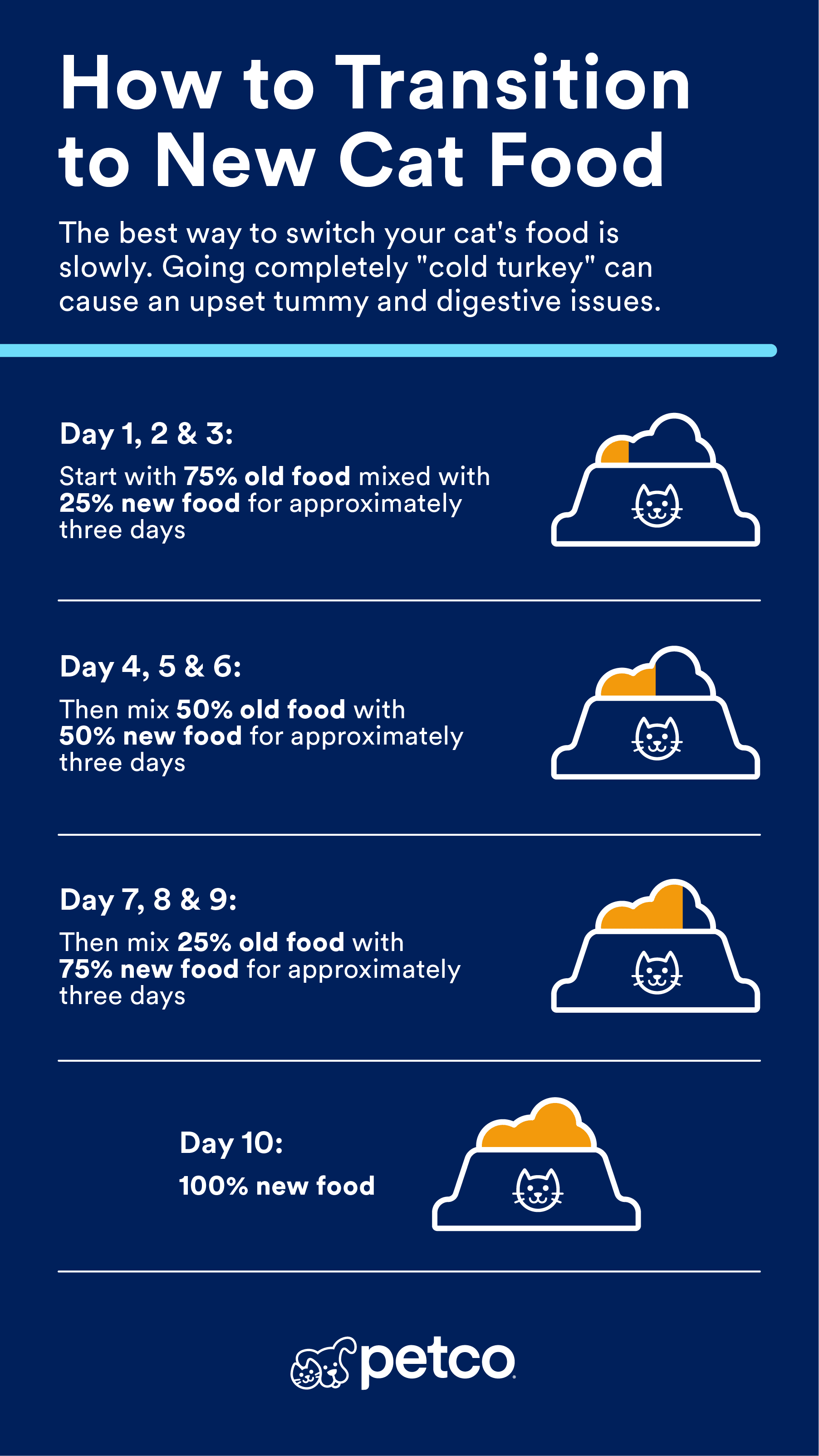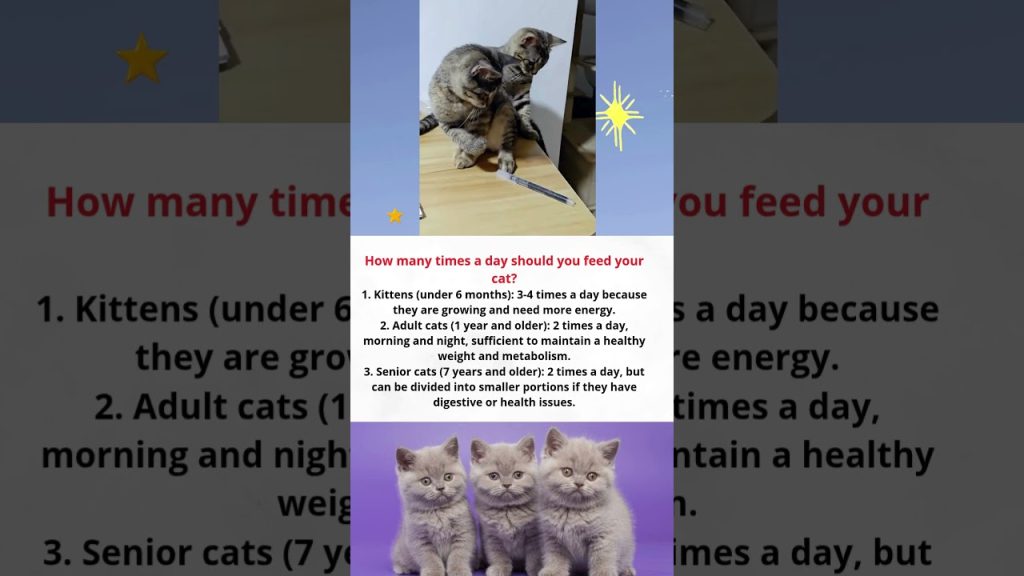Are you puzzled about how often you should feed your furry friend? You’re not alone.
Many cat owners find themselves asking, “How many times a day do you feed your cat? ” It’s a crucial question that impacts your cat’s health and happiness. The answer isn’t as simple as it may seem, and understanding the right feeding schedule can make a world of difference.
Dive into this article to discover the secrets of optimal cat feeding that will keep your feline purring with contentment. We’ll guide you through everything you need to know, ensuring you make the best choices for your beloved pet. Keep reading to unlock the key to your cat’s well-being.

Credit: www.petco.com
Ideal Feeding Frequency
Finding the ideal feeding frequency for your cat can feel like a puzzle. Cats have unique needs, and how often you feed them affects their health and happiness. Getting this right means paying attention to several key factors that shape their daily routine.
Factors Influencing Feeding Schedule
Every cat is different, and their feeding schedule should reflect that. Consider your cat’s breed, metabolism, and any health issues. Some cats do well with two meals a day, while others might need smaller, more frequent feedings.
Think about your lifestyle too. If you’re away from home for long hours, a feeder that dispenses multiple small meals might work better than leaving a full bowl out all day.
Age And Life Stage Considerations
Kittens usually need to eat more often than adult cats because they’re growing fast and burning a lot of energy. Feeding them three to four times daily supports their development and keeps their blood sugar stable.
Adult cats generally thrive on two meals a day. Senior cats, however, might need adjustments—sometimes smaller, more frequent meals help with digestion and prevent weight loss.
Activity Level Impact
Active cats burn more calories and may require more food spread throughout the day. If your cat enjoys play sessions or outdoor adventures, breaking their food into several smaller meals can keep their energy steady.
Less active or indoor cats often do well with fewer meals to avoid overeating and weight gain. Have you noticed if your cat’s energy levels change after meals? That can be a clue to tweak their feeding times.
Types Of Cat Food
Cats need the right kind of food to stay healthy and happy. Different types of cat food offer various benefits and challenges. Understanding these can help you decide how many times a day to feed your cat. Here are the main types of cat food to consider.
Dry Food Benefits And Drawbacks
Dry cat food is easy to store and serves as a convenient option. It usually costs less than wet food and can help keep your cat’s teeth clean. Dry food has a longer shelf life once opened. Cats often enjoy the crunchy texture.
On the downside, dry food contains less moisture. Cats may not drink enough water, leading to dehydration. Some dry foods have more fillers and less protein. This may not be ideal for cats with specific health needs.
Wet Food Advantages
Wet cat food has high moisture content. This helps keep cats hydrated, especially those who drink little water. Wet food often contains more protein and fewer carbohydrates. It can be easier for older cats or those with dental problems to eat.
Wet food may smell stronger, which cats often like. It comes in many flavors, giving cats variety. The main downside is that it spoils quickly after opening. It also tends to be more expensive than dry food.
Raw And Homemade Diets
Raw and homemade diets allow full control over ingredients. They can be tailored to a cat’s specific health needs. Fresh ingredients may provide better nutrient absorption. Some cats prefer the taste and texture of fresh food.
This diet requires careful preparation to avoid harmful bacteria. It takes more time and effort to prepare balanced meals. Consulting a vet is important before starting a raw or homemade diet. This ensures your cat gets all necessary nutrients safely.
Portion Control
Portion control is key to keeping your cat healthy and happy. Feeding the right amount helps maintain a healthy weight and prevents issues like obesity. It also ensures your cat gets the right balance of nutrients without overeating.
Calculating Daily Caloric Needs
Start by figuring out how many calories your cat needs each day. This depends on factors like age, weight, activity level, and whether your cat is spayed or neutered.
You can use this simple formula for an adult cat: Resting Energy Requirement (RER) = 70 × (weight in kg)^0.75. Then multiply the RER by a factor based on activity level, usually between 1.2 and 1.4.
For example, if your cat weighs 4 kg, the RER is about 140 calories. Multiply by 1.2 for a mostly indoor cat, giving around 168 calories per day.
Measuring Food Portions
Use a kitchen scale or measuring cup to portion your cat’s food accurately. Eyeballing portions often leads to overfeeding.
Check the food packaging for calorie information per serving. This helps you match the portion size to your cat’s daily caloric needs.
For wet food, measure the weight in grams. For dry food, use volume or weight as specified. Keep a feeding log to track how much your cat eats daily.
Avoiding Overfeeding
Overfeeding can cause weight gain and health problems. Even a few extra bites daily add up fast.
Resist giving too many treats or table scraps, which add unnecessary calories. Instead, use healthy alternatives like small pieces of cooked chicken or commercial cat treats with controlled calories.
Ask yourself: Is my cat asking for food out of hunger or boredom? Sometimes, extra attention or playtime can reduce begging behavior.
Feeding Techniques
Feeding your cat the right way supports their health and happiness. Different techniques suit different cats and homes. Some cats do well with strict meal times. Others prefer to eat whenever they feel hungry. Understanding these techniques helps you choose the best feeding style for your cat’s lifestyle and needs.
Scheduled Meals Vs. Free Feeding
Scheduled meals mean offering food at set times each day. This helps control portions and keeps your cat’s weight steady. Cats learn when to expect food and may feel more secure.
Free feeding leaves dry food out all day. Cats eat small amounts whenever they want. It suits cats that graze and those who eat little at a time. Watch your cat’s weight closely with this method. Free feeding may lead to overeating for some cats.
Using Puzzle Feeders
Puzzle feeders make cats work for their food. These toys slow down eating and add mental exercise. Cats enjoy hunting for their meals, which keeps them active.
Use puzzle feeders to reduce boredom and prevent fast eating. They help cats focus and stay sharp. Puzzle feeders work well with dry food and small treats.
Feeding Multiple Cats
Feeding several cats requires planning. Each cat may have different diets and eating habits. Separate feeding stations prevent fights and stress.
Watch to ensure all cats eat their own food. Some cats eat others’ food quickly. Feeding at the same time helps keep peace. Use bowls with different shapes or colors to avoid confusion.
Health And Behavior Signs
Understanding your cat’s health and behavior helps determine the best feeding schedule. Cats show clear signs when they need food or when their diet needs change. Watching these signs improves their well-being and keeps them happy.
Recognizing Hunger Signals
Cats use body language and sounds to show hunger. They may meow loudly or rub against you. Some cats follow you to the kitchen or near their food bowl. Restlessness or pacing can mean they are ready to eat. Noticing these signs helps feed them on time.
Adjusting Feeding For Weight Changes
Weight gain or loss affects your cat’s health. If your cat gains weight, reduce meal portions or frequency. Weight loss might need more frequent feeding or higher-calorie food. Regularly check your cat’s weight with a scale or vet visits. Adjusting feeding keeps your cat at a healthy size.
Monitoring For Digestive Issues
Watch for vomiting, diarrhea, or constipation after meals. These signs may mean your cat’s food does not agree with them. Change feeding times or food type if digestive problems appear. Keep fresh water available to aid digestion. Early detection prevents serious health problems.

Credit: www.youtube.com

Credit: www.reddit.com
Frequently Asked Questions
How Often Should I Feed My Adult Cat Daily?
Most adult cats do well with two meals a day. Feeding twice provides balanced nutrition and prevents overeating. Adjust portions based on your cat’s weight and activity level for optimal health.
Is Free-feeding Better Than Scheduled Cat Meals?
Free-feeding can lead to overeating and obesity. Scheduled meals help control portions and maintain a healthy weight. Most vets recommend feeding cats at set times for better digestion and routine.
How Much Food Does A Cat Need Per Meal?
A typical adult cat requires about 20 calories per pound daily. Divide this into two meals, adjusting for age and activity. Consult your vet to determine the right portion size for your cat’s needs.
Can Kittens Eat Multiple Times A Day?
Yes, kittens need 3 to 4 small meals daily. Frequent feeding supports their rapid growth and energy needs. Gradually reduce meals as they mature into adulthood.
Conclusion
Feeding your cat the right amount keeps them healthy and happy. Most cats do well with two meals a day. Some kittens or older cats may need more frequent feeding. Watch your cat’s weight and energy to adjust feeding times.
Fresh water should always be available. Consistent feeding helps build a strong bond with your pet. Remember, every cat is different. Talk to your vet for advice specific to your cat’s needs. Good feeding habits lead to a long, joyful life for your furry friend.

